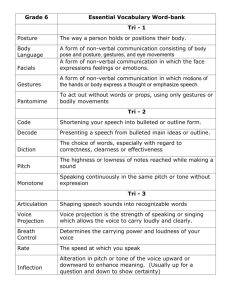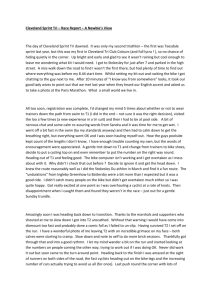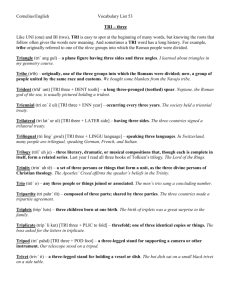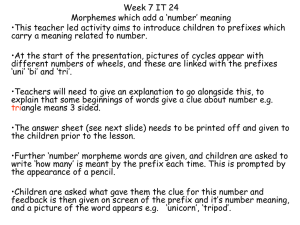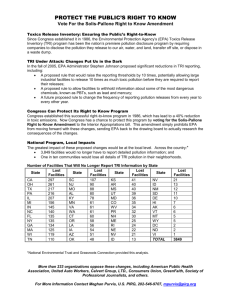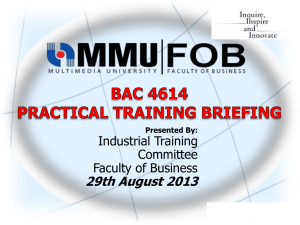Targeted Reading Intervention - National Research Center on Rural
advertisement
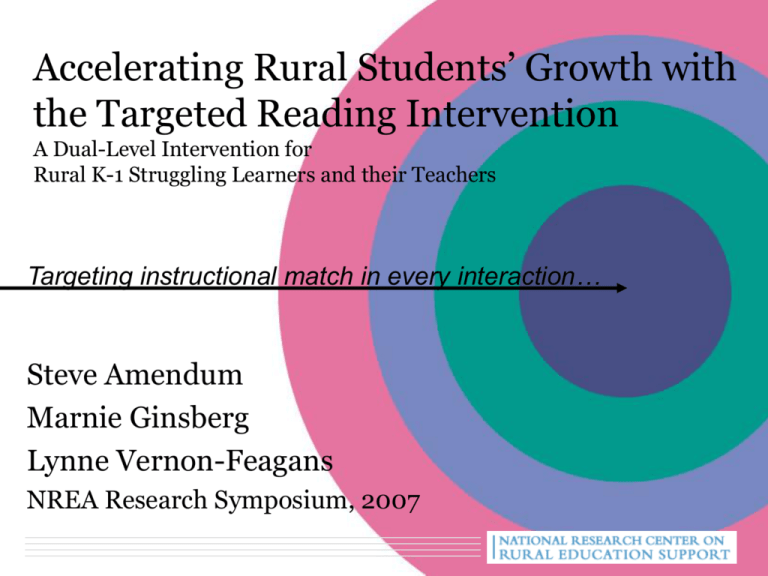
Accelerating Rural Students’ Growth with the Targeted Reading Intervention A Dual-Level Intervention for Rural K-1 Struggling Learners and their Teachers Targeting instructional match in every interaction… Steve Amendum Marnie Ginsberg Lynne Vernon-Feagans NREA Research Symposium, 2007 Purpose The purpose of this study is to improve the teaching strategies of rural kindergarten and first grade teachers in literacy, with a specific focus on strategies that are effective with struggling readers who do not make reading gains using traditional reading instruction. Who are we? • Research project • Part of the National Research Center on Rural Education Support – www.nrcres.org • Funded by the Institute of Education Sciences (IES) Cierra • “the most challenging student…that I had in all my years of teaching” • “I did not know at what moment when she came in the classroom what that day was going to be like. And if she was just going to snap and …lose it – what was she going to do?” How did theory and research inform the TRI design? Why focus on rural kindergarten and first grade teachers? • First years of school – (Alexander& Entwisle, 1992; Juel, 1988; Vernon-Feagans, Odom, Pancsofar & Kainz, in press; Vernon-Feagans, Gallagher & Kainz, in press) • Rural teachers’ experience/access – (GAO report, 2004; Lee & Burkham, 2003) • Satisfaction/preschool experiences – (Israel, 2004; Vernon-Feagans et al., in press) Why focus on struggling learners? • Rate of progress below expectations – (Pianta, 2001; Meisels, 2001) • NCLB spotlight • Impacts behavior Why focus on literacy? • Foundation for subsequent academic learning – (Lyon et al., Snow, Burns & Griffin; 1998; VernonFeagans, 1996) • End of first grade decoding accounts for 40% of reading comprehension during secondary school – (Foorman et al., 1997) What is the TRI and why is it unique? What is the Targeted Reading Intervention? • For struggling K-1 students • Intensive, diagnostic reading instruction • Daily • Given by the classroom teacher • One-on-one small groups • Rapid reading growth What makes the TRI unique? • • • • Intensive collaborative consultation Individual diagnostic teaching model Classroom teacher tutors Teacher-student relationships What makes the TRI unique? • Real reading from the start – Always in the context of words – Letter-sound knowledge – Mapping sounds to print • Low cost/adaptability TRI framework Re-Reading for Fluency (~2+ minutes) Word Work (~8+ minutes) Guided Oral Reading (~5+ minutes) TRI Extensions TRI framework Re-Reading for Fluency (~2+ minutes) TRI Extensions TRI framework Word Work (~8+ Minutes) TRI Extensions Initial word work strategies Word Work (~8+ minutes) – Segmenting Words – Change One Sound – Read, Write, & Say – Pocket Phrases Word Work example: Change One Sound TRI framework Guided Oral Reading (~5+ minutes) TRI Extensions Guided Oral Reading examples What makes the TRI professional development unique? • • • • Summer institute Weekly TRI Team meetings Monthly workshops Ongoing collaborative consultation What makes the TRI Professional Development unique? Ongoing collaborative consultation: • TRI Consultant, in NC, provides support all year • On-site Consultant, for K-1 teachers – Facilitates the TRI Professional Development process • Bi-weekly individual consultation – Via webcam – Focus on the TRI session and the specific student’s needs • Weekly or bi-weekly problem-solving meetings – driven by TRI diagnostic teaching and a problem-solving process What makes the TRI professional development unique? What makes the TRI professional development unique? Preliminary TRI Results Three studies: TRI in rural lowwealth schools • Study 1 – one semester TRI intervention – non-Reading First schools – 168 K-1st children • Study 2 – two semester TRI intervention – Reading First schools – 170 K-1st children • Study 3 – in-depth case study of TRI instruction – one teacher and 1st grade student Research design: Study 1 and Study 2 • Randomly assigned schools to intervention or control • All kindergarten and first grade classrooms – 5 focal children in each classroom were randomly selected from those children identified by the teacher as struggling learners – 5 non-focal children in each classroom were randomly selected from those children identified by the teacher as not struggling learners Study 1--Key findings • Struggling students who receive the TRI with adequate implementation – greater growth in the Woodcock-Johnson Letter/Word ID subtest – greater growth in the Peabody Picture Vocabulary Test. • No K-1 children retained in experimental school – 10 retained in control schools Study 2--Key findings • Struggling students identified to receive the TRI – greater growth in the Woodcock-Johnson Basic Reading cluster – greater growth in the Woodcock-Johnson Letter/Word ID subtest • Struggling students who receive the TRI with adequate implementation – greater gains in their teachers’ ratings of their literacy skills Study 3 • One first grader, “Cierra” – Struggled with reading and academics • Pre-primer reading instructional level – Exhibited serious behavior problems • TRI instruction March 10, 2006 thru May 10, 2006 Study 3—Key findings Dramatic improvement in multiple areas – Phonemic awareness – Phonics knowledge – Oral reading fluency – Instructional reading level – Self-selected reading practice – General classroom behavior – General classroom performance – Teacher-student relationship Phonemic awareness improvements 60 50 40 30 20 10 0 3/10/2006 3/24/2006 4/7/2006 Phoneme Segmentation Fluency 4/21/2006 Nonsense Word Fluency correct Number Correct Sounds Identified Phonics knowledge improvements 50 45 40 35 30 25 20 15 10 March 10 March 27 Date 3-May Oral reading fluency improvements 70 Words Correct Per Minute 60 50 40 30 20 10 0 3/10/2006 3/17/2006 3/24/2006 3/31/2006 4/7/2006 Date 4/14/2006 4/21/2006 4/28/2006 Instructional reading level Improvements • March 10 – Pre-primer reading instructional level (94% accuracy) • April 11 – First-grade reading instructional level (90% accuracy) Self-selected reading practice 3.5 Tests Taken per Day* 3.0 2.5 2.0 1.5 1.0 0.5 0.0 Nov 11/05 Dec 12/05 Jan 1/06 Feb 2/06 Mar 1-20 Mar 21- Apr 3/1-3/20 3/21-4/24 24 One teacher’s experience… Final thoughts • TRI = effective early intervention • TRI = effective professional development processes • Flexible, sustainable & portable For further information… • Steve Amendum – samendum@email.unc.edu • Marnie Ginsberg – mginsber@email.unc.edu The Targeted Reading Intervention Model The Interaction of Decoding & Sight Words
